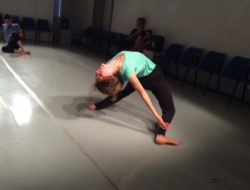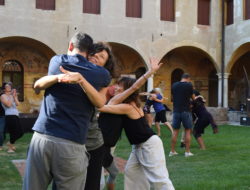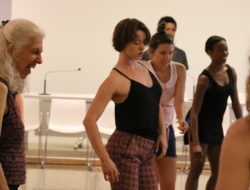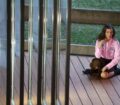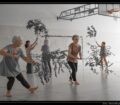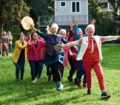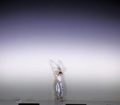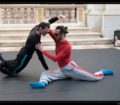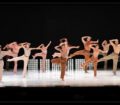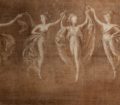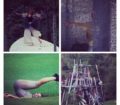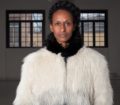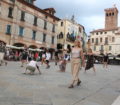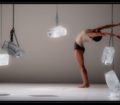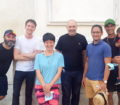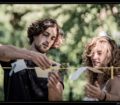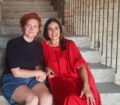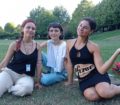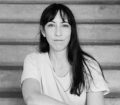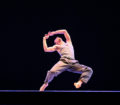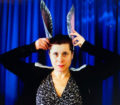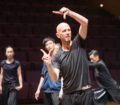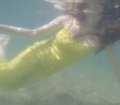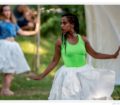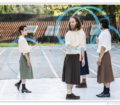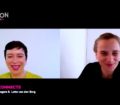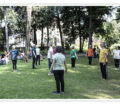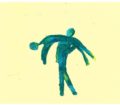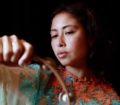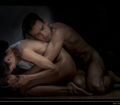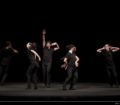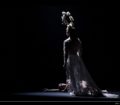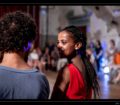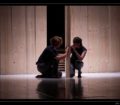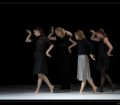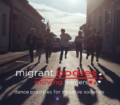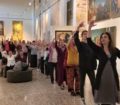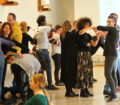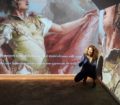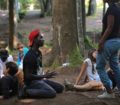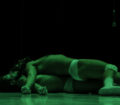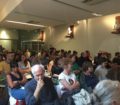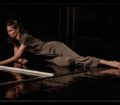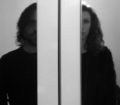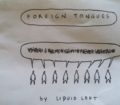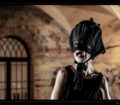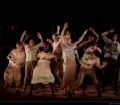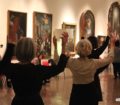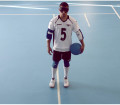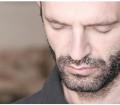Cielo, se è vero che sogno,
rasserena la mia memoria,
poiché non è possibile che un sogno contenga tante cose!
Pedro Cladéron de la Barca
Floating House (Hopeful on the way forward) è l’ultimo lavoro di Elena Giannotti nato dall’incontro artistico con Lisa Gilardino, produttore creativo del lavoro, e Nick Bryson, Rafal Pierzynski, Mia D’Ambra e Penelope Pistoia, i danzatori con cui la coreografa ha condiviso idee e “sogni”.
Ed è proprio il tema del sogno che Elena Giannotti affronta in Floating House, e che lei stessa descrive come “il momento dell’intimità, il momento più intimo che abbiamo”.
Di seguito potete scoltare l’intervista audio in cui Elena ci parla del processo creativo del suo lavoro, di come ha lavorato con i danzatori, e del suo pensiero in controtendenza sul tema dell’audience development.
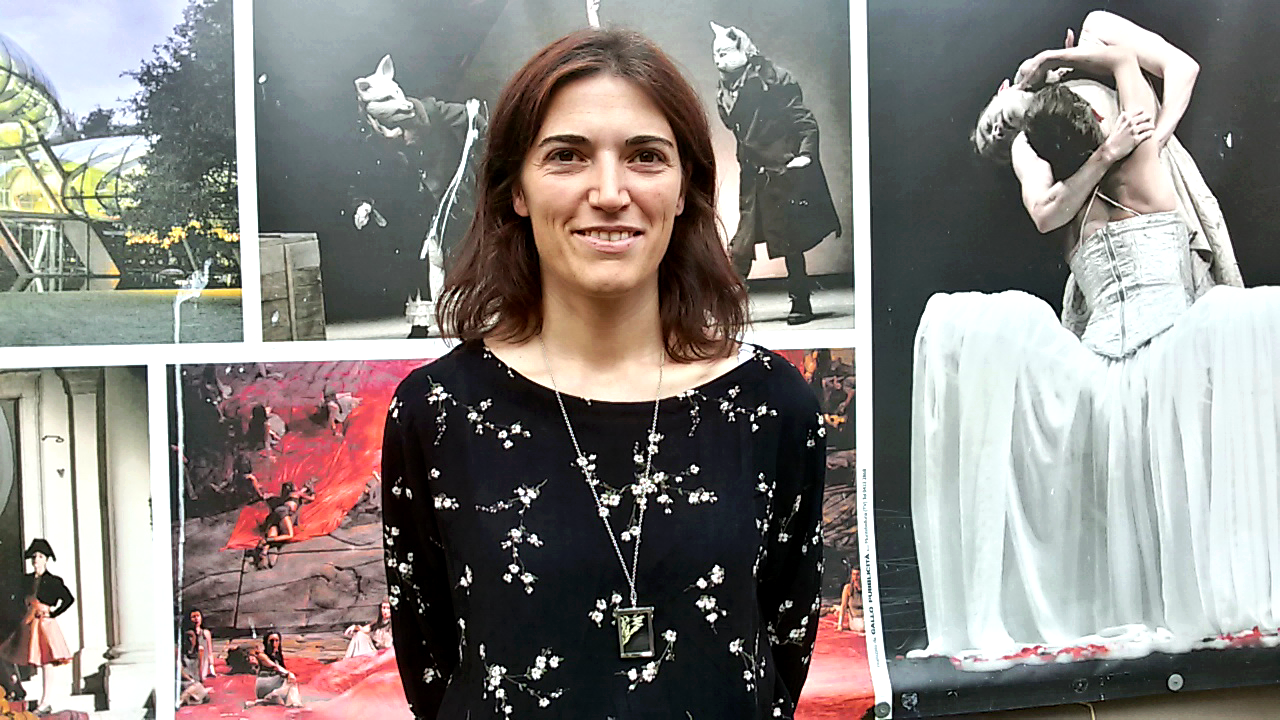
Interview with Elena Giannotti
Pivot Dance is an European Project which gathers choreographers and producers to work on creation process and audience development. Floating House (Hopeful on the way forward) is the result of one of these artistic meeting between the choreographer Elena Giannotti and the creative producer Lisa Gilardino.
Floating House is a modular choreography created thank to the collaboration of Nick Bryson and Rafal Pierzynski, and the young dancers Mia D’Ambra and Penelope Pistoia.
The theme of the work is the dream, which is for Elena Giannotti “the moment of intimacy, the most personal moment that we have.”
Here you can read the transcription of the audio-interview with Elena on her creative process, on her work with the performers involved, and what she asks herself about the audience engagement.
Elena, you have been involved in the European Pivot Dance project, would you like to tell us about your experience?
It’s been very interesting to meet artists who I had never met before in a different moment from the ones during which we see each other’s works.
We discussed about our ideas, the staging, the performers we wanted to involve, about music, and all things which you usually speak about with your helpers and assistants.
It’s been new for me. I’m an independent artist, and I usually work alone, my works are usually the results of an activity in complete isolation.
It’s been helpful and new for me to have the support of Bassano, and of an entourage of people like Lisa Gilardino, the producer of my work, that were interested in the creative process of my work.
Let’s talk about the creative process of your work the Floating House.
What is the idea you started to work on?
I usually start from where I am in the present. When Pivot Dance project started I had finished my studies on dreams. I started from there.
Dreams are a wierd field, and I focused just on little aspetcs that interest me: the body answers and the psychophysical dynamics.
How did you work with the performers. What kind of suggestions did you give them?
I always build the performance on the person who I want work with. In this case I worked alone with Nick Bryson and alone with Rafal Pierzynsky.
I had already known Nick, he is an amazing artist, and I absolutely wanted him in my performance.
He is a dancer who works a lot with the voice, he is a talent in this, and he also is a mathematician.
We share the same love for linked to the interior world, to the body, and to all the aspects of numbers.
In my opinion dream is the moment of intimacy, the most personal moment that we have,because it can not be proved. So I asked Nick what he wanted to work on, and what came out was a very ironic math lesson.
Rafal is an extraordianry dancer, I met him by Virgilio Sieni, and when I knew about Pivot project I immediately called him.
I knew the young dancers, Mia and Penelope because we are working together in Livorno, they are studying with Chelo Zoppi, who is also my teacher.
I worked with them at differents levels. There are some moments of the performance very choreographed and extremely detailed, and others are tasks, I mean I give them some instructions and a range of choices to make spontaneusly on stage. Every time they leave me open mouthed. It’s incredible how such young dancers can dance with so much detail, they are amazing. They already developed individuality and deepness, so I entrust myself on their ability to play my coreography.
How did you work, and how do you usually work on the theme of audience engagement that was also one of the tasks of the Pivot Dance project in which were involved?
I think this is a contradictory theme, first because I’m also a spectator, of course a very educated one because I have been dancing for nearly 30 years, and then because staging itself requires the presence of an audience. The artistic process continually reminds you about this.
I usually create what I want to see, or what I think is not there yet, and I wish that someone else sees what I see or better what I’m not able to see.
I think we have to rely on the rigorous schemes of our process, of our capacity to transform the ideas, and this is the input that makes the audience come to see the show. I mean, I ask myself: Is this the one reason that pushes the audience to come to the show?
Rita Borga
Tags: Bmotion danza, Elena Giannotti, Floating House, Lisa Gilardino, operaestate


